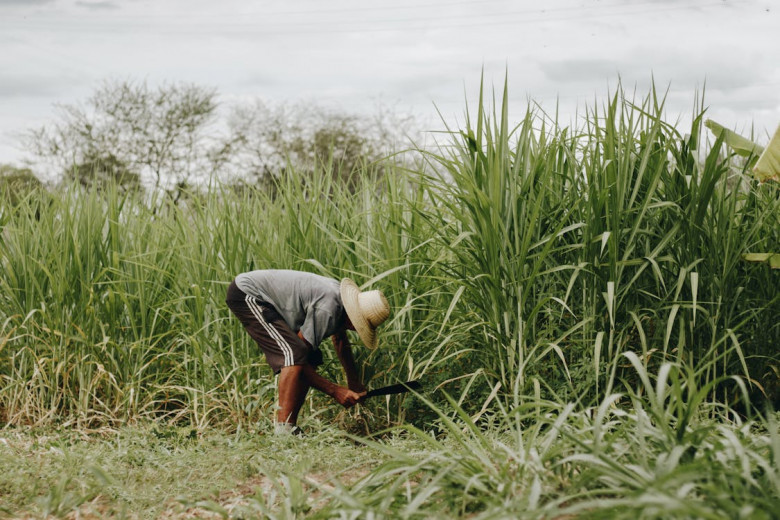views
Sugarcane Farming in Uttar Pradesh: Growth, Practices, and Opportunities

Uttar Pradesh, often referred to as the "Sugar Bowl of India," stands as the country's largest producer of sugarcane. With its vast alluvial plains, fertile soil, and favorable climate, the state has carved a prominent space for sugarcane farming in India’s agricultural economy. In recent years, the government’s push for modernization in agriculture and increased farmer awareness has significantly improved both the productivity and profitability of sugarcane cultivation in the region.
Importance of Sugarcane Farming in Uttar Pradesh
Sugarcane is not just a commercial crop in Uttar Pradesh; it is a lifeline for millions of farmers. According to recent data, over 20 lakh farmers in the state are engaged in sugarcane cultivation across approximately 22 lakh hectares of land. The crop serves as the primary raw material for sugar, jaggery (gur), and ethanol production. Moreover, sugarcane farming contributes heavily to rural employment and income generation.
Climatic and Soil Conditions
The agro-climatic conditions of Uttar Pradesh are highly suitable for sugarcane farming. The crop thrives in temperatures between 20°C to 35°C and requires moderate to high rainfall, typically between 1000–1500 mm annually. The rich loamy soil found in the Indo-Gangetic plains provides the perfect medium for deep root penetration and nutrient retention, essential for high-yielding sugarcane crops.
Recommended Sugarcane Varieties
For optimal yield and better disease resistance, farmers are encouraged to grow improved varieties. Some of the high-yielding and early-maturing sugarcane varieties suitable for Uttar Pradesh include:
· Co 0238 (Kashi Lakshmi): Highly popular for its high yield and early maturity.
· Co 0118 (Kashi Dev): Resistant to red rot and provides better sugar recovery.
· CoS 767: Well-suited for western Uttar Pradesh due to its resistance to top borer.
These varieties have been developed considering the unique regional challenges and are recommended by state agricultural universities and the Sugarcane Research Institutes.
Modern Farming Practices for Better Yield
To make sugarcane farming more productive and sustainable, adopting modern agricultural practices is crucial. Some of the best practices include:
· Trench and Ring Method of Planting: Ensures better aeration and water efficiency.
· Integrated Nutrient Management: Balanced use of organic manure and chemical fertilizers based on soil testing.
· Drip Irrigation: Reduces water wastage and improves fertilizer absorption.
· Crop Rotation and Intercropping: Helps in maintaining soil health and generating extra income.
Government Support and Schemes
The Government of Uttar Pradesh, along with the central government, offers various subsidies and schemes to support sugarcane farmers. These include:
· Direct benefit transfer of cane dues.
· Subsidized supply of seed and fertilizers.
· Promotion of mechanization like ratoon management devices and sugarcane planters.
· Ethanol Blending Program (EBP) to create alternate markets for sugarcane.
Such initiatives not only support the income stability of farmers but also promote a circular economy model through the biofuel sector.
Challenges Faced by Sugarcane Farmers
Despite its potential, sugarcane farming in Uttar Pradesh faces several challenges:
· Delayed payments from sugar mills.
· Pests and diseases, particularly top shoot borer and red rot.
· Water management issues, especially in drought-prone regions.
· Declining soil health due to mono-cropping.
To overcome these, a shift towards sustainable and diversified agricultural practices is essential.
Conclusion
Sugarcane farming continues to be the backbone of the agricultural economy in Uttar Pradesh. With the adoption of scientific techniques, government support, and farmer education, the sector holds great promise. However, tackling challenges like water management and timely payments will be key to sustaining long-term growth. Platforms like Fasal Kranti play a vital role in empowering farmers with the right information, modern methods, and market updates—making them future-ready for the evolving agricultural landscape.













![What Is The QuickBooks Enterprise Support Number [[GET Quick Assistance]]](https://timessquarereporter.com/business/public/index.php/upload/media/posts/2025-06/04/what-is-the-quickbooks-enterprise-support-number-get-quick-assistance_1749095947-s.jpg)








Comments
0 comment